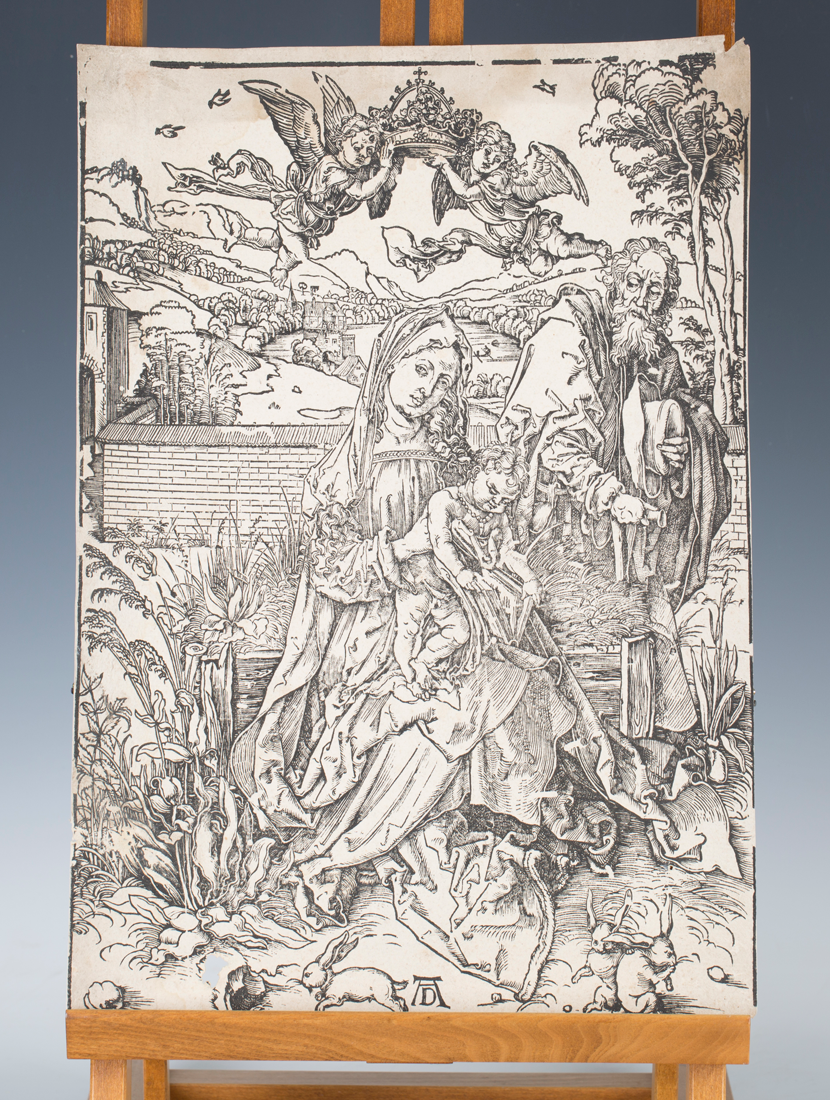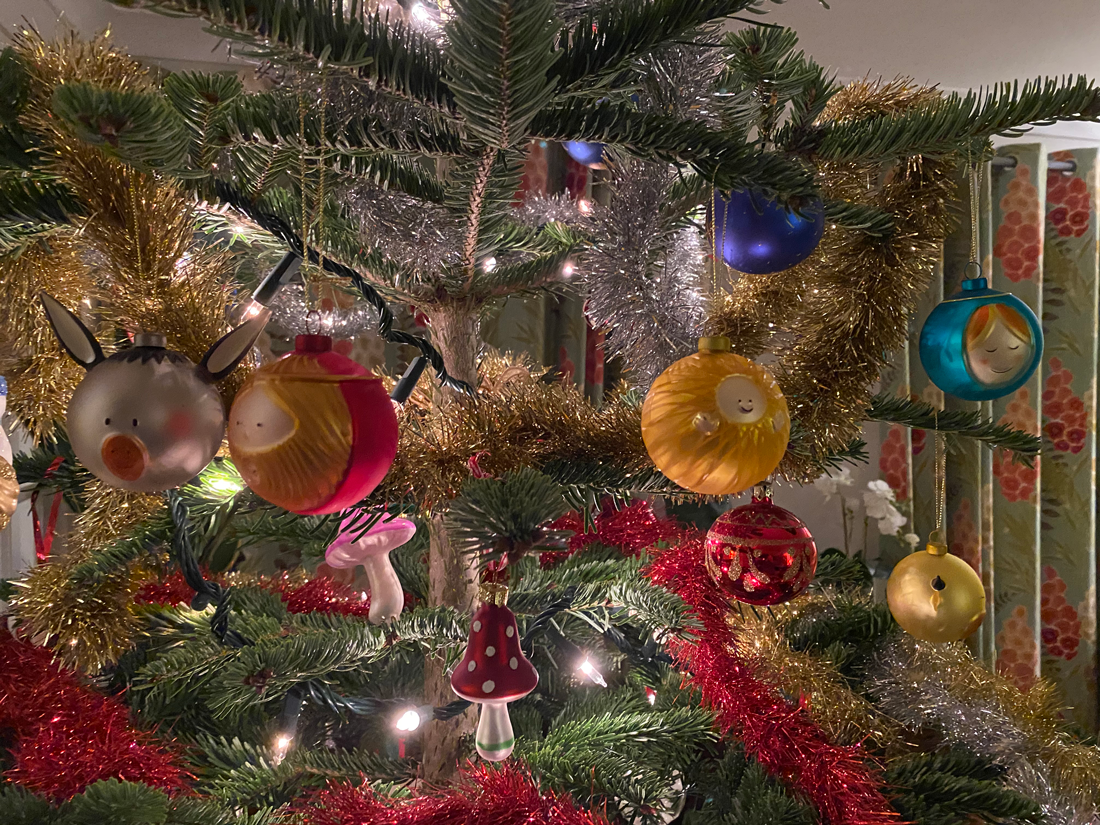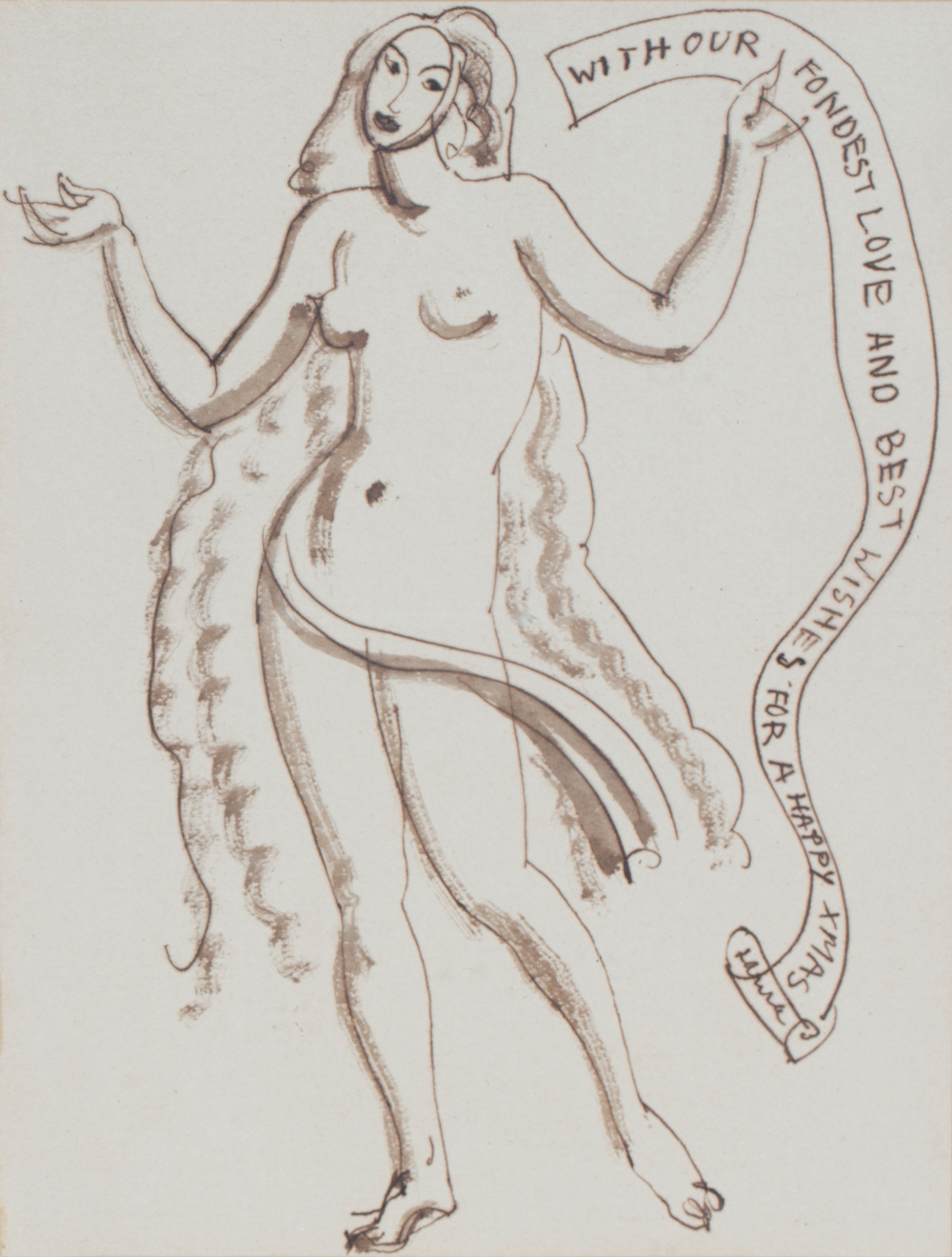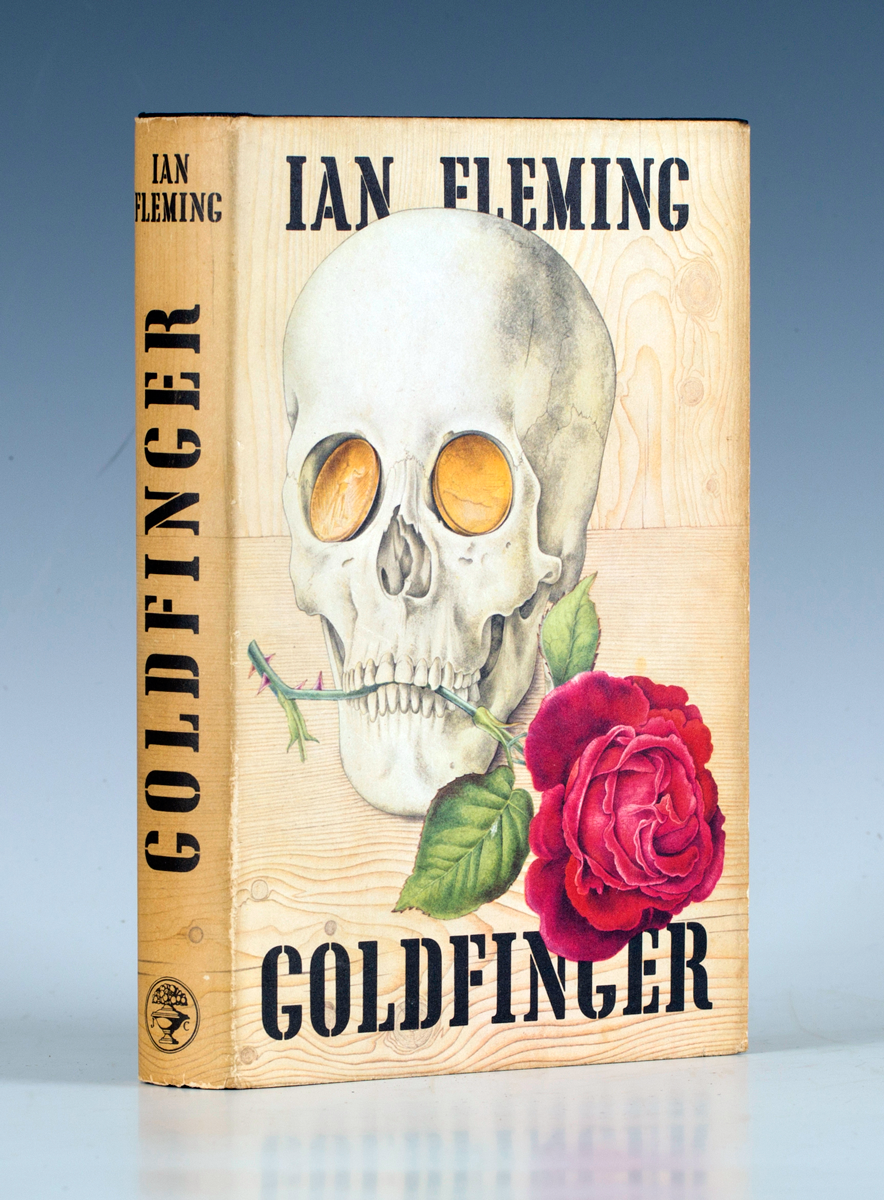
The artist Eric Ravilious found inspiration in the Downland landscapes of Sussex and Wiltshire This inspiration is central to the exhibition Eric Ravilious Downland Man at the Wiltshire Museum Devizes.
The exhibition highlights how Ravilious’ work was rooted in the landscape and life of England.
During Eric Ravilious’ lifetime watercolour painting underwent a revival. This most English of mediums and traditions was fused with modern ways of seeing and painting. He found a very English corrective to modernism resulting in his emotionally cool and intensely structural paintings.
These Downland watercolours are all the more extraordinary when considered against the backdrop of the outbreak of war and highlight Ravilious’ fascination with the importance of place and moments in time.
In December, shortly after the outbreak of war on the 3rd September 1939 Ravilious toured and recorded England’s chalk figure sites. The Long Man of Wilmington was familiar to Ravilious from his childhood. Ravilious likened the ‘Wilmington Giant’, near Eastbourne, with a figure of Virgo holding staves in the frescoes of San Gimignano by Bartolo di Fredi of ‘Scenes from Creation’.
Ravilious painted The Wilmington Giant in watercolour. He employed a dry brush leaving plenty of the white paper showing through. You can see the influence of the artist’s printmaking. The textures are reminiscent of hatching adding to the suggestion of distant hills, the corn moving in the breeze and the scudding light over the surface of the landscape. The taut, purposeful barbed wire fence draws our eye through the composition to the giant’s feet. The irregular square mesh of the fence adds to the sense of movement. Wire from a leaning post frames the giant. This is a landscape which speaks of the English and the ancient.
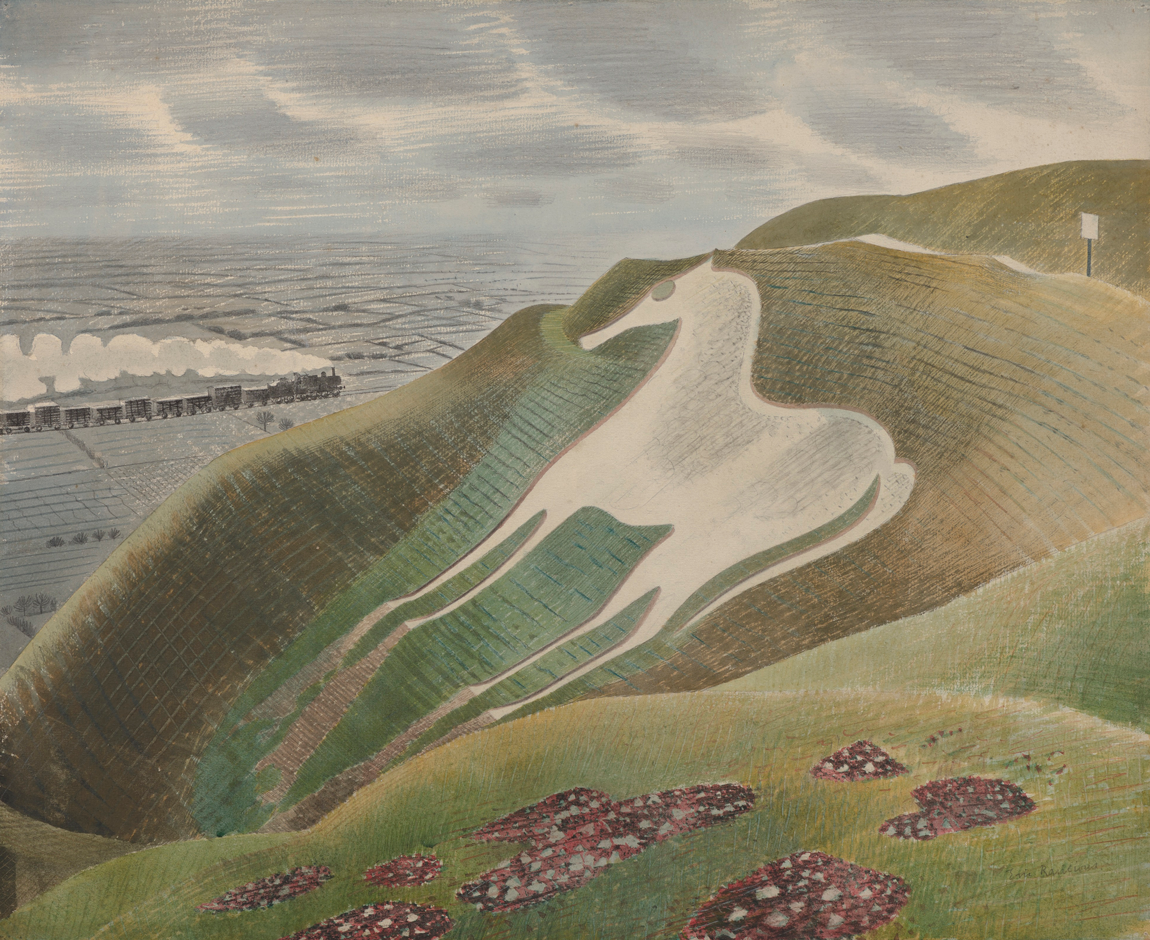
Like the Long Man at Wilmington the Westbury Horse in Wiltshire would have been visible from the train. The white horse is carved into the uneven contours of the hillside which are accentuated once again in the hatched brush strokes. I love the train crossing the grey plain beyond the ridge set beneath the shimmering sky.
The exhibition highlights that Ravilious’ sensibility was modern but his techniques were not. Texture, light and movement connect the artist’s work to the English Romantic tradition but with a particular and fresh voice. It is at once figurative and yet highly stylized. Watercolour, a most English of mediums, is fused with modern ways of seeing and painting. His graphic, linear approach to the medium resulted in a very English Modernism. This superb exhibition allows us to re-examine Ravilious’ fascination with the importance of place capturing particular moments in time.
Eric Ravilious Downland Man runs at the Wiltshire Museum Devizes until 30th January 2022, for more information visit www.wiltshiremuseum.org.uk.


